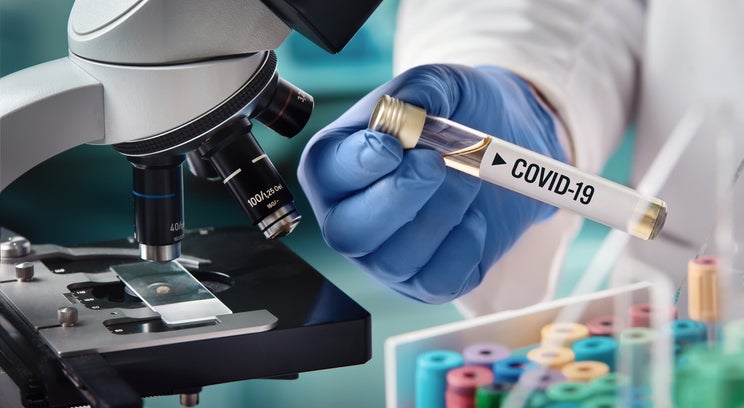
In 2003, the respiratory disease known as Severe Acute Respiratory Syndrome (SARS) spread throughout the globe, killing 774 people. Like COVID-19, SARS caused a global panic, but luckily disappeared only four months after it began.
In 2016, after more than a decade of research, a team of scientists in Texas was ready to test their newly developed SARS vaccine in healthy humans. Unfortunately, investors were not interested in providing the necessary funding to test the vaccine in the clinic and the project went dormant.
SARS and its cousin Middle East Respiratory Syndrome (MERS) of 2012 should have triggered major federal and private investments to develop treatments and vaccines in anticipation of future global viral outbreaks.
But once the sense of emergency faded away, economic interest in the vaccine project evaporated. With that, the world lost the opportunity to have advanced research on and eventually a commercially available vaccine to combat COVID-19. As SARS and SARS-CoV-2 are closely related coronaviruses, a SARS vaccine might have provided some cross-protection against SARS-CoV-2.
Now that we are in the middle of yet another pandemic, those affected by COVID-19 are asking why governments do not have stockpiles of treatments or a vaccine in hand, ready to go.
But developing a vaccine is complex, expensive, risky, and takes time. According to experts, it will take at least a year before we have a usable COVID-19 vaccine in hand.
Vaccine research and funding
The SARS-CoV-2 outbreak has highlighted the flaws associated with the current framework for vaccine development. Current funding of medical research tends to be market-driven and reactive, rather than proactive. Nothing is more reactive in medical research than responding to viral outbreaks.
Viral outbreaks initially lead to a surge in research investment, but when those outbreaks wane, as they customarily do, other priorities take their place and the research comes to a halt. Opportunities to capitalize on the initial investment are lost, and the cycle starts all over again with the next viral outbreak, a wasteful and time-consuming process.
Normally, the length of time needed to bring a vaccine to market is between five and 15 years and involves a lengthy process of testing on animals, expensive clinical trials on humans, and regulatory approvals. The time for a new vaccine candidate to reach Phase 1 clinical trial status alone is usually five to seven years.
Therefore, companies wishing to bring a new vaccine to market must incur the costs of vaccine production, including research and development (R&D), regulatory approval, plants, labor, manufacture, equipment, supplies, and liability. Industry experts estimate that a new vaccine costs anywhere from US$400 million to US$2 billion from initial research to commercial production.
Revenues from vaccine sales have remained relatively constant as most vaccinations are only performed once in a lifetime. For example, compared to prescription drugs, which are often taken by patients for many years, most vaccines are only administered between one and four times over a lifetime.
The flu vaccine is one of the few vaccines that is given annually. Meanwhile, vaccine production costs have increased. Therefore, the economic rationale to develop a vaccine for a short-lived epidemic is limited.
Currently, only a handful of large biopharma companies, such as GSK, J&J, Sanofi, Pfizer, and Merck, are carrying out vaccine research and development. Vaccines can be big business as evidenced by the global sales figures shown in the table below.
Biopharma companies and vaccine sales in 2019
| Company | Tradename and vaccine target | Global sales |
| GSK Biologicals | BEXERO; meningitis | US$845 million |
| Emergent BioDefense Operations Lansing LLC | BIOTHRAX; Bacillus anthrax | US$1,011 million* |
| GSK Biologicals | CERVARIX; human papillomavirus | US$62 million |
| GSK Biologicals | FLUARIX; influenza | US$673 million |
| GSK Biologicals | INFANRIX; diphtheria and tetanus toxoids and acellular pertussis | US$911 million |
| Sanofi | MENACTRA; meningitis | US$726 million |
| Sanofi | PENTAXIM; diphtheria, tetanus, pertussis, poliomyelitis, and Haemophilus influenzae type b | US$561 million |
| Pfizer Inc. | PREVNAR 13; Streptococcus pneumoniae | US$1,579 million |
| Merck & Co, Inc. | PROQUAD; measles, mumps, rubella and varicella virus | US$2,275 million |
| GSK Biologicals | SHINGRIX; herpes zoster | US$2,255 million |
In response to COVID-19, the US private sector, university researchers, and the National Institutes of Health (NIH) are rushing to develop vaccines that can be tested in human clinical trials in the coming months.
Some 30-plus biopharma companies are reportedly working on a vaccine. But even with this Herculean effort, and streamlining initiatives from the US Food and Drug Administration (FDA), a COVID-19 vaccine likely won't be FDA approved for some time.
Economic impact of COVID-19
Experts have outlined several economic scenarios that might unfold from COVID-19, including a global slowdown or a more severe pandemic-driven recession.
Many factors play a role in the impact on the global economy, such as whether the virus is seasonal, countries are able to achieve the same rapid control as China, the fatality rate, the rate of transmission, the response of healthcare systems around the world, the total number of cases in the United States, the length of the pandemic, and the rapid development and availability of adequate diagnostic tests and treatments.
According to some economic experts, a one-year epidemic would kill 236,000 people in the United States and reduce the country’s gross domestic product by 2 percent, or US$420 billion. But if the virus spreads more broadly and has a higher mortality rate, the economic effect would be proportionately greater.
A one-year epidemic that takes one million lives could reduce US GDP in 2020 by 8 percent, or US$1.8 trillion. To boost their economies, central banks in more than 50 countries, including the United States, have cut interest rates.
Beyond COVID-19, the private sector may be pressured to weigh the costs/benefits of a globalized vaccine supply chain against the robustness of a domestic-based supply chain. Relying on China or other countries for even basic vaccine needs is concerning to many.
Moving the production of most vaccines domestically would reduce dependence on global supply chains and ensure availability when needed. Of course, the expected increases in costs to governments and patients will have to be balanced and considered.
No one knows when the COVID-19 crisis will end. The human impact is real, and many businesses have acted quickly to protect their employees, address business challenges and risks, and assist in mitigating the current outbreak, however they can.
Unfortunately, COVID-19 is not the last viral pandemic the world will face. With the increasing population, the overall globalization of economies, and the ease of travel, it is only a matter of time before we see the next viral mutation leading to another pandemic.
The need for government involvement in vaccine research
Borrowing a line from Former Chicago Mayor Rahm Emanuel, we cannot let this crisis go to waste. For the reasons stated above, the for-profit pharmaceutical industry is well-equipped and motivated to address this crisis, but they are not able to anticipate and develop the research to address the next crisis.
For-profit pharmaceutical companies are “for-profit,” and they can only develop drugs when there is a commercial market to reward their efforts. But crisis prevention means being in front of a disease before it reaches pandemic proportions.
Governments and nonprofits, therefore, must take the lead in funding vaccine research as for-profit pharmaceutical companies are unlikely to fund projects that solve short-lived viral epidemics. Yet, one thing is certain, there will always be new viral outbreaks.
Thus, since we cannot look solely to the for-profit pharmaceutical companies to solve these problems, governments must step forward to fund proactive vaccine development. Otherwise, we will once again be faced with worldwide panic come the next major global viral outbreak regardless of the outcome for COVID-19.
Fortunately, strategic partnerships, such as the Global Alliance for Vaccines and Immunization (GAVI), UNICEF, and the WHO already exist. These partnerships have stimulated new vaccine manufacturing sites in countries such as Brazil, Russia, India, China, and South Africa (known as BRICS).
These countries are forecasted to play a substantial and increasing role in the global vaccine market, not only by producing traditional vaccines at competitive low costs and under WHO-prequalified standards, but also by generating innovative products in strategic alliances with multinational corporations.
Currently, the main government and nonprofit agencies who fund the bulk of vaccine research include the Biomedical Advanced Research and Development Authority (BARDA), a division of the US Department of Health and Human Services (HHS), and the National Institute of Allergy and Infectious Diseases (NIAID), a division of the NIH.
These groups have provided much needed funding and have partnered with various biotech and pharma companies. Others have received funding from the Coalition for Epidemic Preparedness Innovations (CEPI), a global organization based in Oslo, Norway.
It is up to governments and the private sector around the world to step up vaccine supplies, research, and development. We ought to be better prepared to handle future viral outbreaks as the disastrous effects on security, the economy, and commerce are currently on full display with COVID-19.






